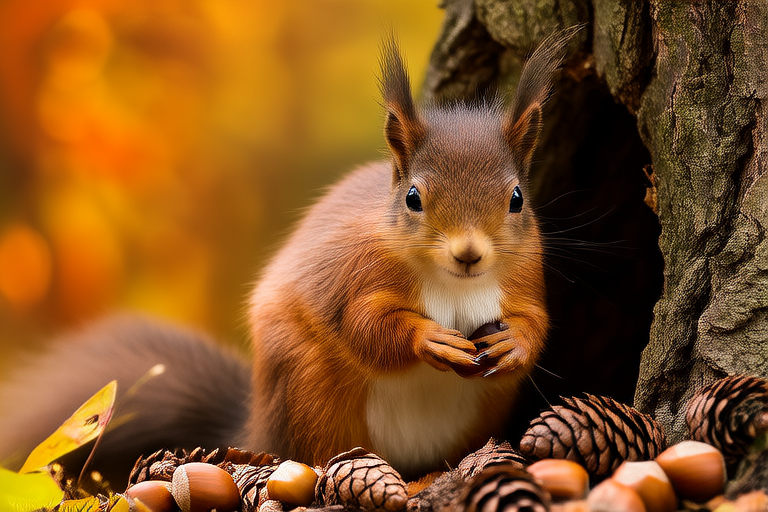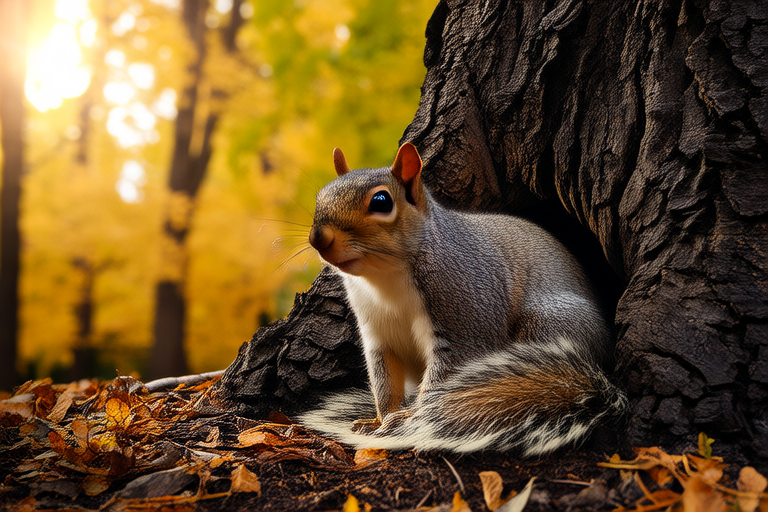
The Secret Life of Squirrels: Unveiling Their Hidden Talents and Habits
When you think of squirrels, the first image that comes to mind might be of a small, bushy-tailed creature scurrying across your backyard or park, busily gathering nuts for winter. While this picture isn’t far from the truth, it only scratches the surface of the fascinating world of squirrels. These agile rodents have a secret life filled with unique behaviors, remarkable problem-solving abilities, intricate communication systems, and surprising dietary preferences. In this article, we will explore the hidden talents and habits of squirrels, shedding light on their intelligence and adaptability.
A World Beyond Nuts
Most people associate squirrels with nuts, but their diet is much more diverse than that. Squirrels are omnivores, meaning they eat both plant and animal matter. Their diet includes seeds, fruits, fungi, insects, and even small vertebrates like birds and eggs. The Eastern gray squirrel, common in North America, has been observed eating mushrooms, which are rich in nutrients and help them survive during lean times. This diverse diet is crucial for their survival, especially in environments where food sources can be unpredictable.
Problem Solvers Extraordinaire
Squirrels are known for their ability to find food, but they also exhibit impressive problem-solving skills. A study conducted by researchers at the University of Exeter found that squirrels could solve complex puzzles designed to test their intelligence. The study involved placing food inside a transparent tube, requiring the squirrels to figure out how to reach it. Not only did the squirrels succeed in retrieving the food, but they also demonstrated learning and memory retention by solving the puzzle faster each time.
One notable example of a squirrel’s problem-solving ability occurred in a New York City park. A squirrel was observed repeatedly trying to open a jar of peanut butter left behind by a careless human. After several failed attempts, the squirrel managed to unscrew the lid and enjoy its treat. This incident highlights the adaptability and persistence of squirrels when faced with challenges.
Communication: More Than Just Chatter
Squirrels communicate through a variety of vocalizations, body language, and scent marking. Their vocal repertoire includes chirps, barks, and trills, each serving a specific purpose. For instance, a sharp bark warns other squirrels of potential danger, while a softer chatter indicates contentment or curiosity. Scent marking, accomplished through glands located on their cheeks and near their tail, helps establish territory and attract mates.
Body language plays a significant role in squirrel communication as well. Tail flicking, ear positioning, and postures convey various messages. When a squirrel stands upright with its tail raised, it signals alertness and readiness to defend itself. Conversely, a lowered tail indicates submission or a peaceful intention.
Adaptations for Survival
Squirrels have evolved numerous adaptations to thrive in their habitats. Their keen sense of smell helps them locate buried nuts and seeds, even under layers of snow. Their sharp claws enable them to climb trees and leap between branches with ease. Squirrels also possess excellent eyesight, allowing them to spot predators from great distances.
In urban environments, squirrels have adapted to live alongside humans. They have learned to navigate sidewalks, cross streets, and access food sources provided by people. Some squirrels have even developed a taste for human food, raiding bird feeders and garbage cans in search of treats. Despite these adaptations, squirrels face numerous threats, including predation, habitat loss, and disease.
Intelligence and Memory
Squirrels are highly intelligent creatures with exceptional memory capabilities. Studies have shown that they can remember the location of thousands of buried nuts and seeds, a skill that is crucial for their survival during winter months when food is scarce. This ability is attributed to their hippocampus, a region of the brain responsible for spatial memory and navigation.
One remarkable example of a squirrel’s memory was documented in a study published in the journal Animal Cognition. Researchers placed acorns in different locations within a large outdoor enclosure and tracked the squirrels’ movements. Over time, the squirrels were able to retrieve over 90% of the acorns, demonstrating their impressive recall abilities.
Life in the Trees
Many species of squirrels are arboreal, meaning they spend most of their lives in trees. Their strong limbs and sharp claws allow them to move swiftly and gracefully through the canopy. Squirrels build nests called dreys, typically constructed from twigs, leaves, and moss, providing shelter from harsh weather conditions and predators. Dreys are usually located high up in trees, offering a strategic vantage point from which squirrels can survey their surroundings.
Ground squirrels, on the other hand, prefer to live closer to the ground. They dig extensive burrow systems, complete with multiple entrances and chambers for sleeping, storing food, and raising young. These burrows serve as a refuge from predators and extreme temperatures, ensuring the safety and comfort of the squirrels.
Mating and Family Life
Squirrels typically mate once or twice a year, depending on the species. Mating season usually occurs in late winter or early spring, and females give birth to litters of two to six kits after a gestation period of about four weeks. Kits are born blind and hairless, relying entirely on their mother for warmth and nourishment.
Young squirrels grow quickly, opening their eyes at around three weeks old and becoming independent at approximately ten weeks. During this time, mothers are extremely protective of their offspring, teaching them essential survival skills such as foraging, climbing, and avoiding predators. Once the kits are weaned, they venture out on their own, beginning their journey as adult squirrels.
The Future of Squirrels
As urbanization continues to encroach upon natural habitats, squirrels must adapt to new environments to survive. Conservation efforts aimed at preserving green spaces and creating wildlife corridors are crucial for maintaining healthy squirrel populations. By understanding and appreciating the unique talents and habits of squirrels, we can work towards ensuring their continued presence in our ecosystems.
The secret life of squirrels reveals a world full of wonder and complexity. From their diverse diets and problem-solving abilities to their intricate communication methods and habitat adaptations, squirrels are truly remarkable creatures. As we learn more about these often-overlooked animals, we gain a deeper appreciation for their intelligence and resilience. Next time you see a squirrel, take a moment to observe its behavior and marvel at the hidden talents that make it such a fascinating part of our natural world.





